Exhibitions
Yoshida Hiroshi-Longing for Nature
2020.05.22(Fri) - 2020.07.06(Mon)
Commemorating the 70th Anniversary of his death
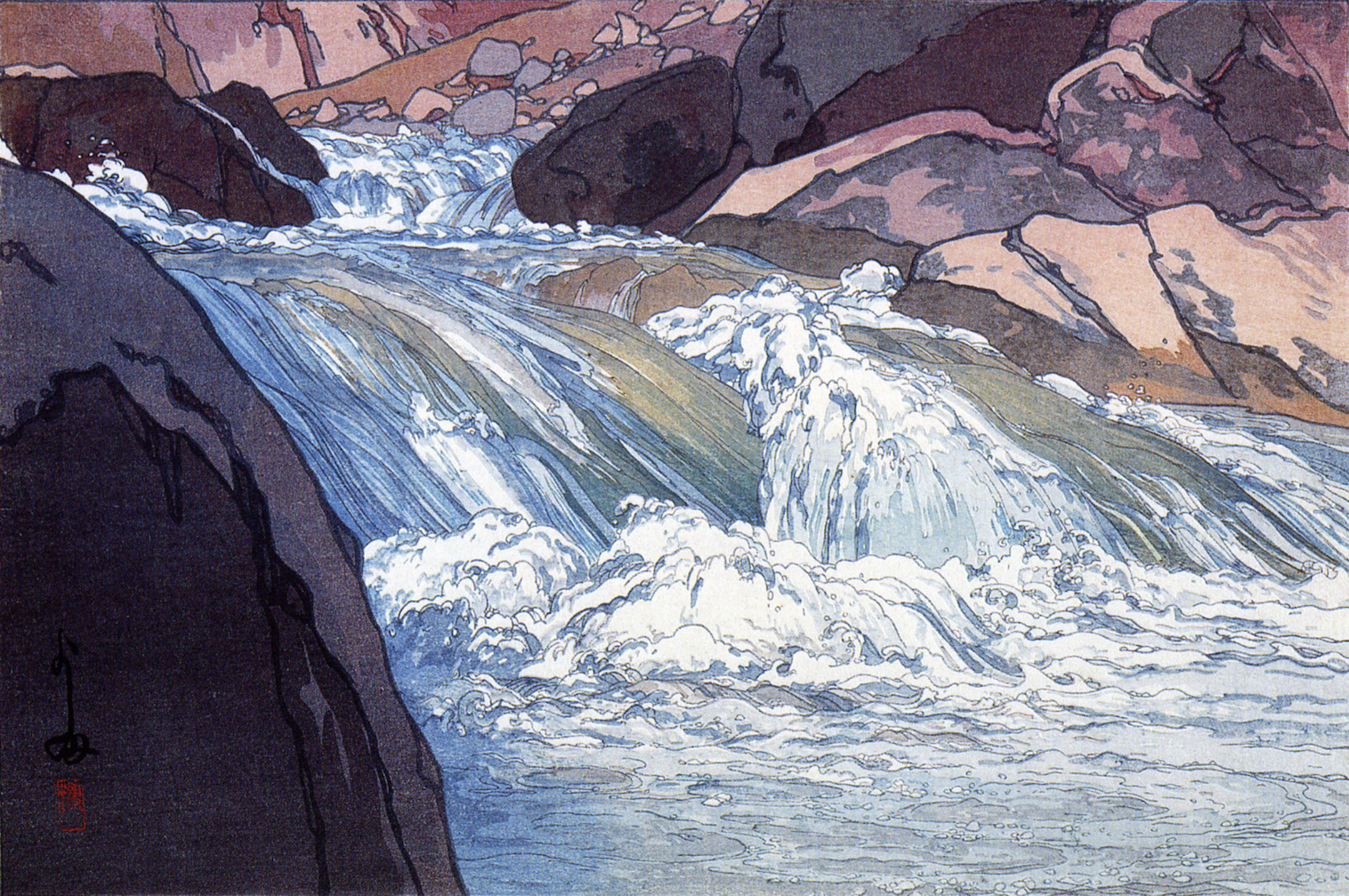
Overview
Yoshida Hiroshi (1876–1950) was a leading artist in the Western-style painting in the early 20th century Japan, working mainly in the genres of watercolor, oil painting and woodblock printing. He was one of the central figures of Japan’s first society of European-style paintings. He published his first woodblock prints based on his drawings at the age of 44 , followed by his first print collection when he was 49. He aspired to create a new artistic style by combining the realistic rendering of European paintings and traditional techniques of Japanese woodcut.
Having great affinity with Nature, Yoshida believed that the natural domain offered ultimate beauty for humans to enjoy. By expressing it through his works he endeavored to convey the beauty to people who were unable to directly appreciate it in that environment. Yoshida mainly depicted landscapes, which were produced through his extensive field trips in Japan as well as in other countries. Celebrating the 70th anniversary of his death, seventy masterpieces are exhibited, selected from his well-known works such as a collection of alpine beauty Twelve Scenes in the Japan Alps, portrayals of transient seascape The Inland Sea Series, and various landscapes based on his sketching journeys abroad.
Yoshida Hiroshi’s woodcut
◆Variants
Yoshida Hiroshi created series of prints based on a single woodblock by changing colors to express changes in ambience and atmosphere through the passage of time, for example, from early morning, foggy hours through evening lights to night time. The Sailing Boats series is an example of this.
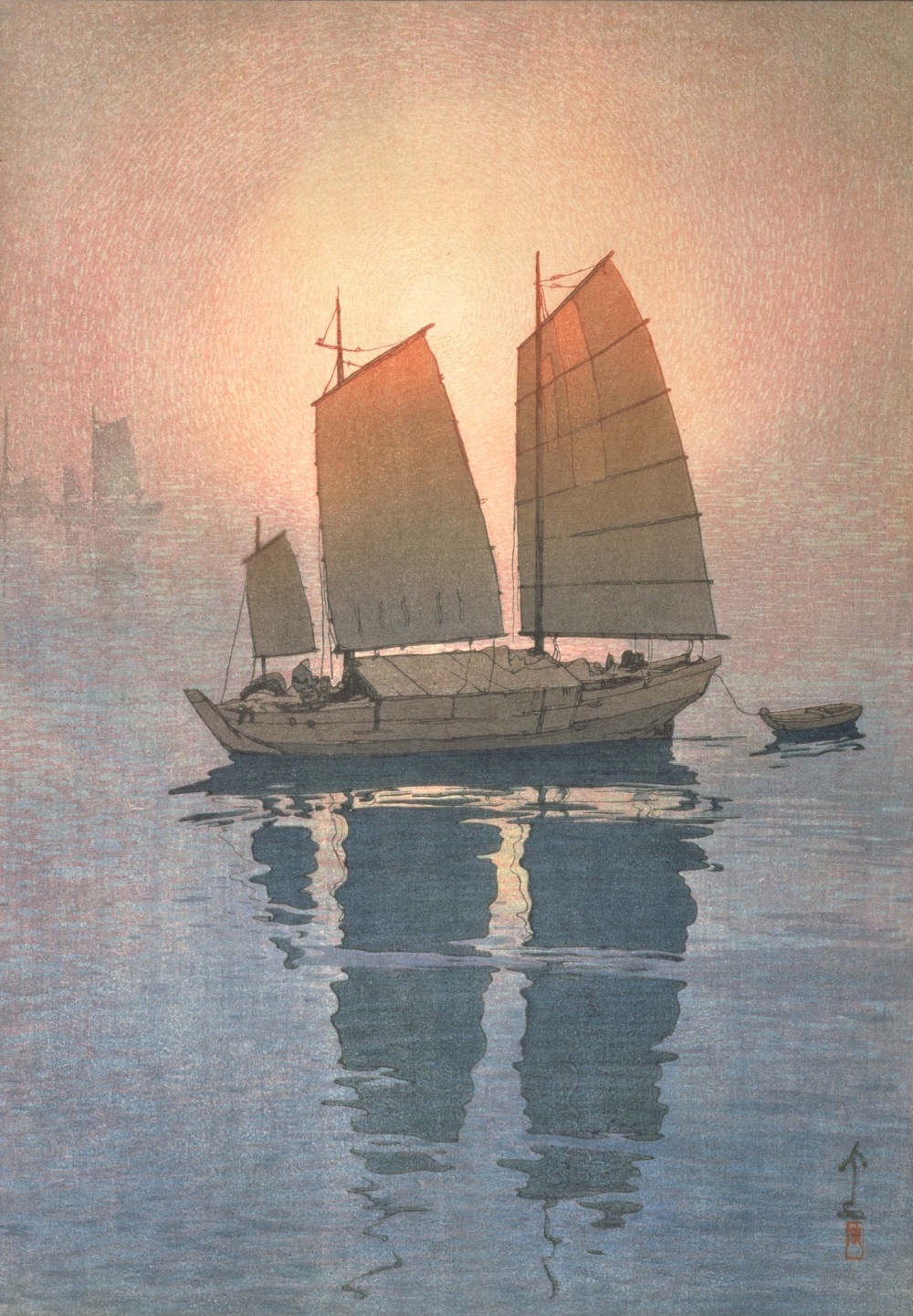
Sailing Boats - Morning
from The Inland Sea Series (1926)
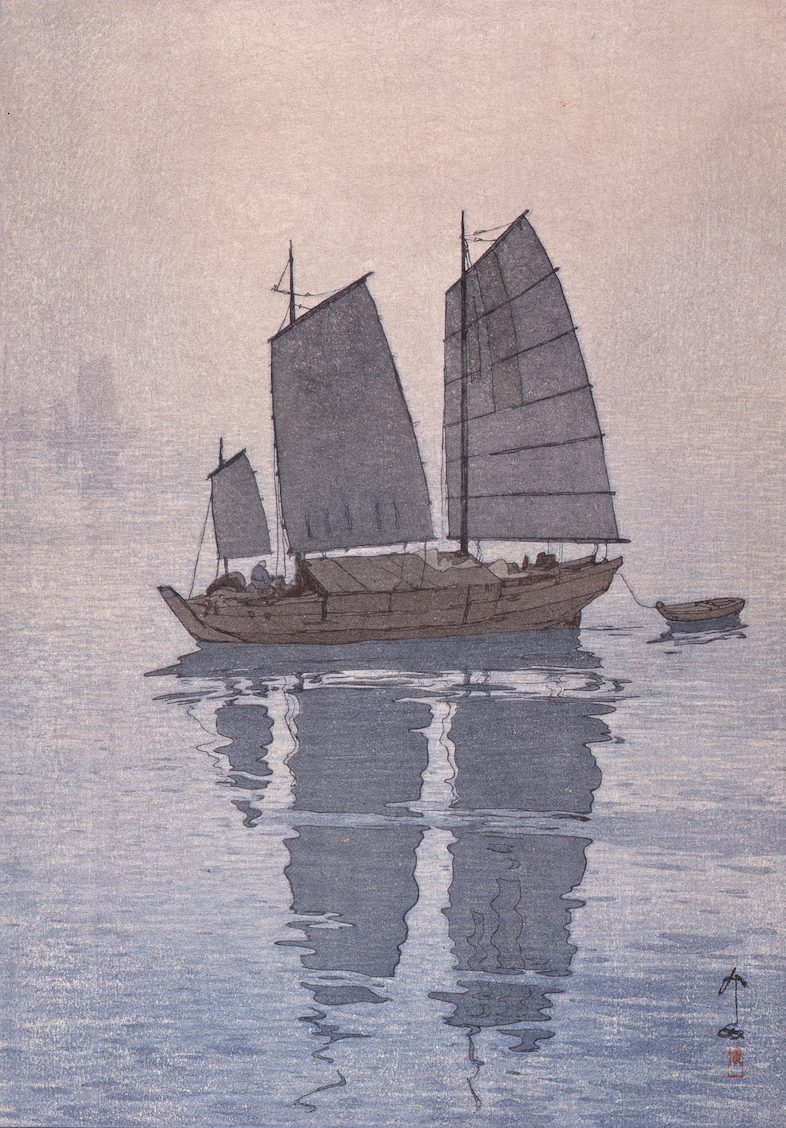
Sailing Boats - Mist
from The Inland Sea Series (1926)
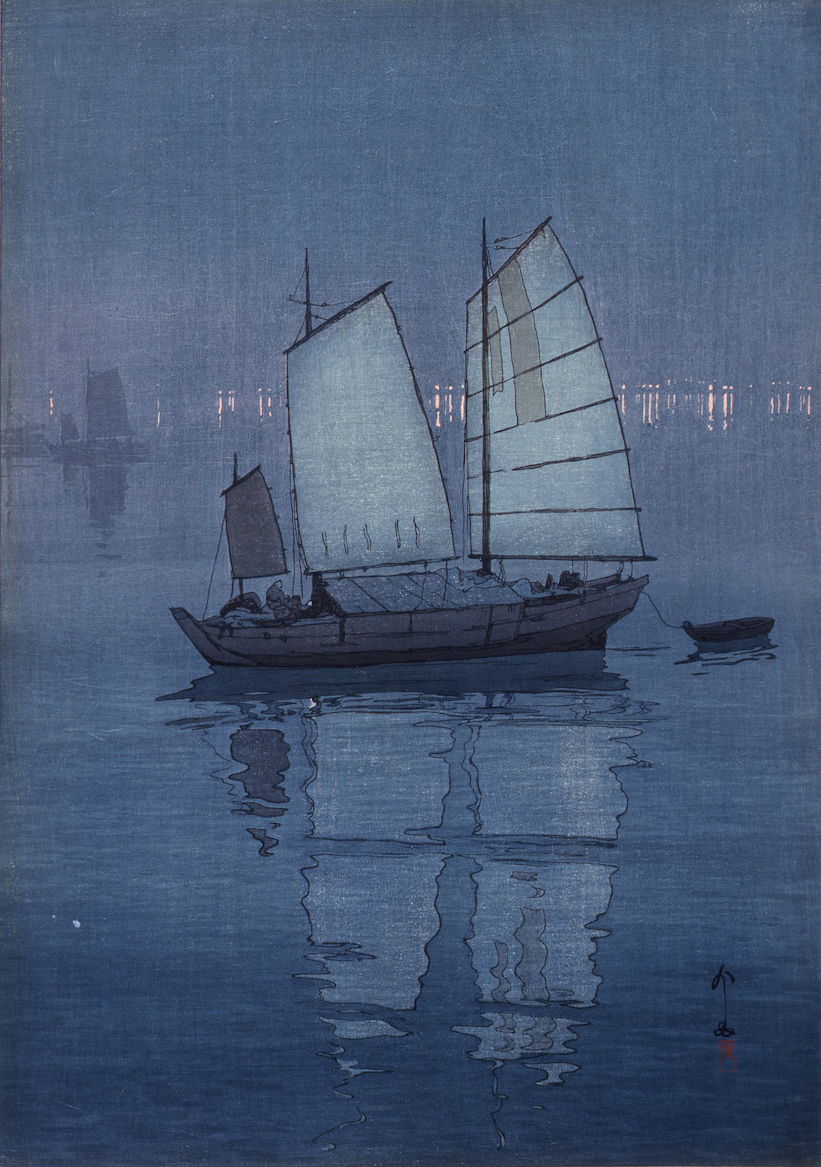
Sailing Boats - Evening
from The Inland Sea Series (1926)
◆Large-size prints
In woodblock printing, the paper must be moistened before pressing, which causes shrink. Large-sized paper is particularly difficult to print for this reason, as it is prone to misalignment of colors. The Sea of Clouds at Houōzan (54.5*82.7 cm) and Sunrise (53.3*71.2 cm) are examples of his dexterous pressing.
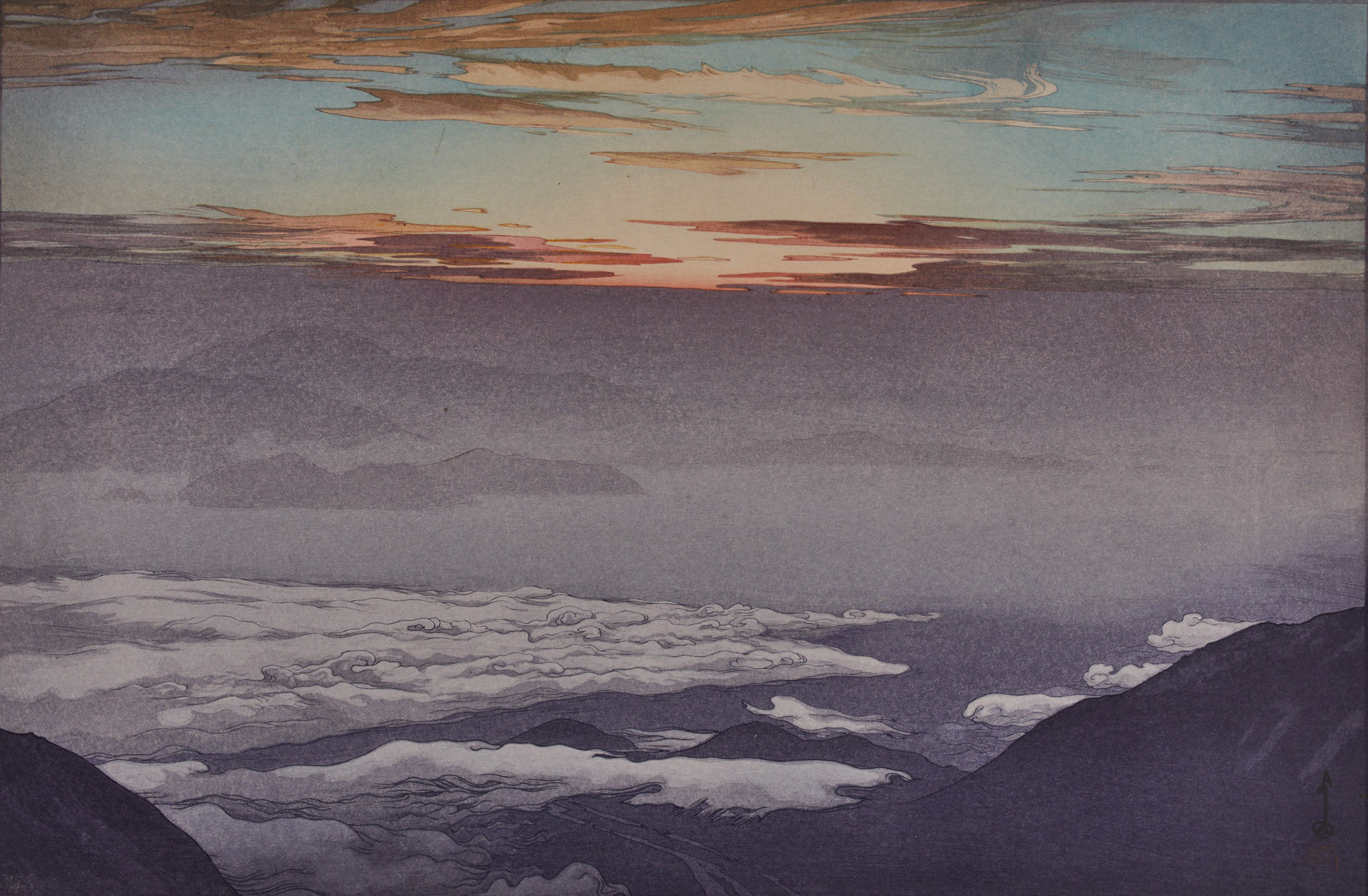
Sea of Clouds at Houōzan (1928)
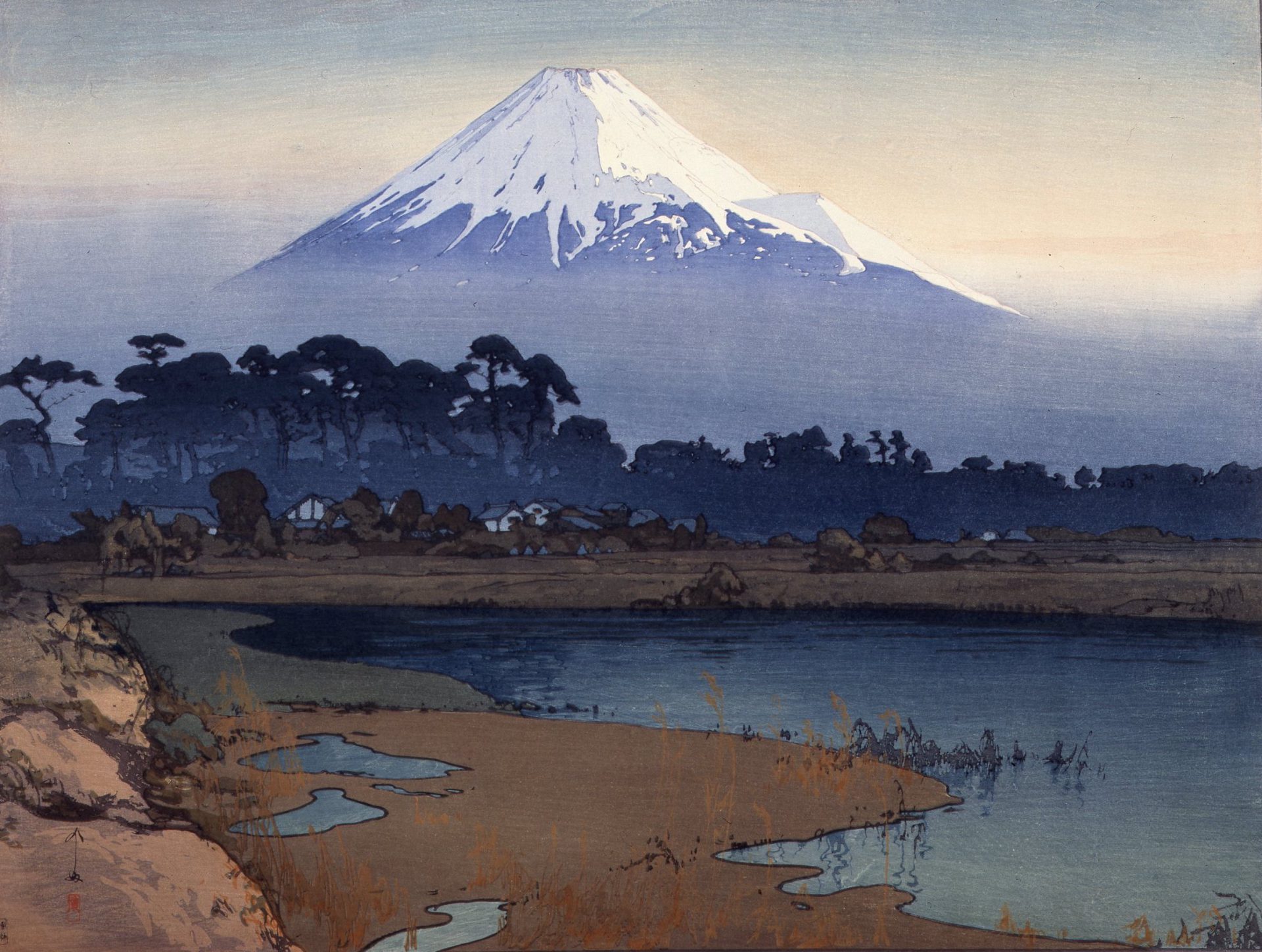
Sunrise
from The Ten Views of Fuji (1926)
◆Extraordinary details
Yoshida’s prints are pressed 30 times on average. To render the minute details, some of them are pressed far more: Kameido of the Twelve Scenes of Tokyo series was pressed 88 times, and Yōmei Gate 96 times.
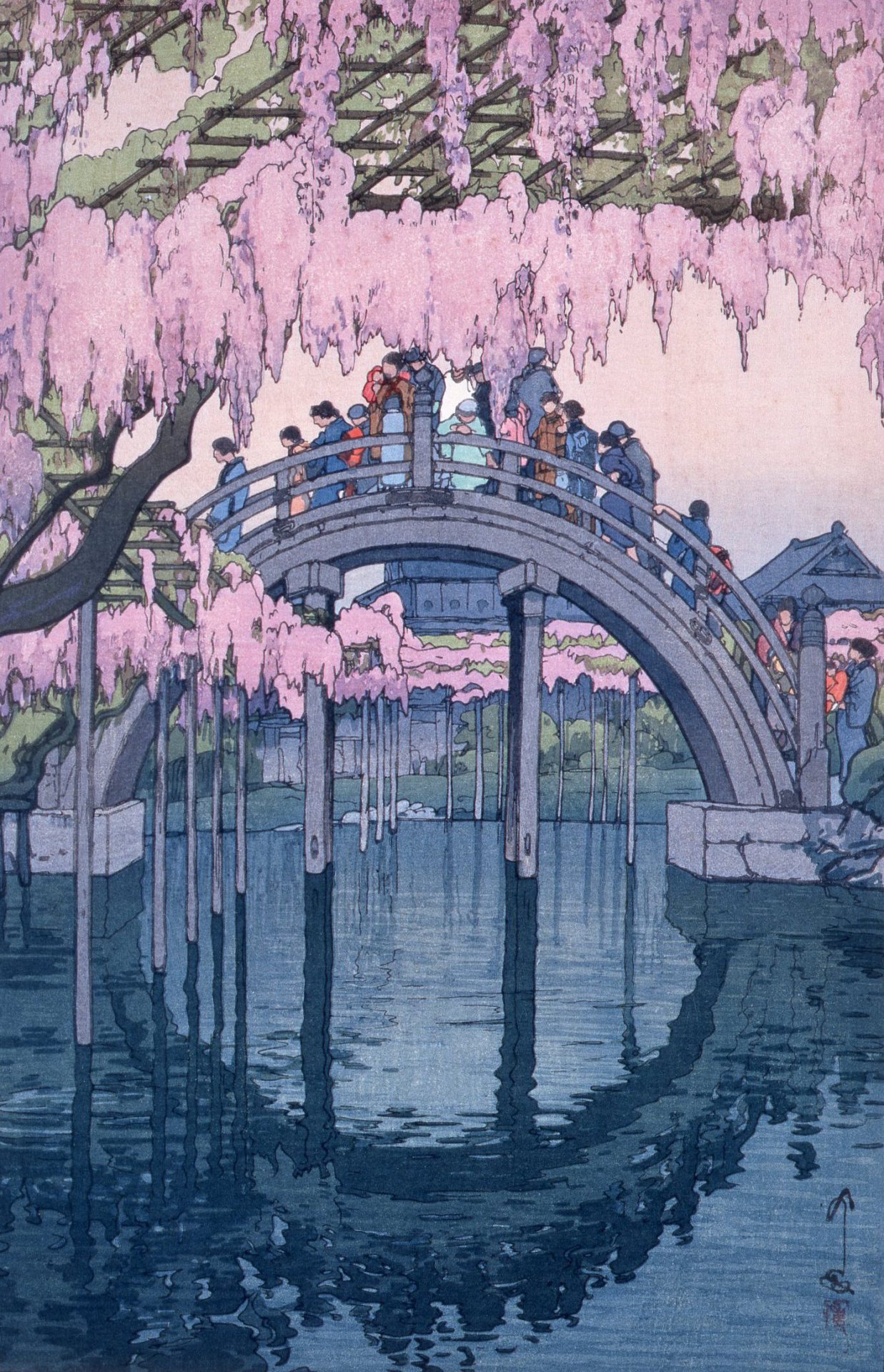
Kameido
from the Twelve Scenes of Tokyo (1927)
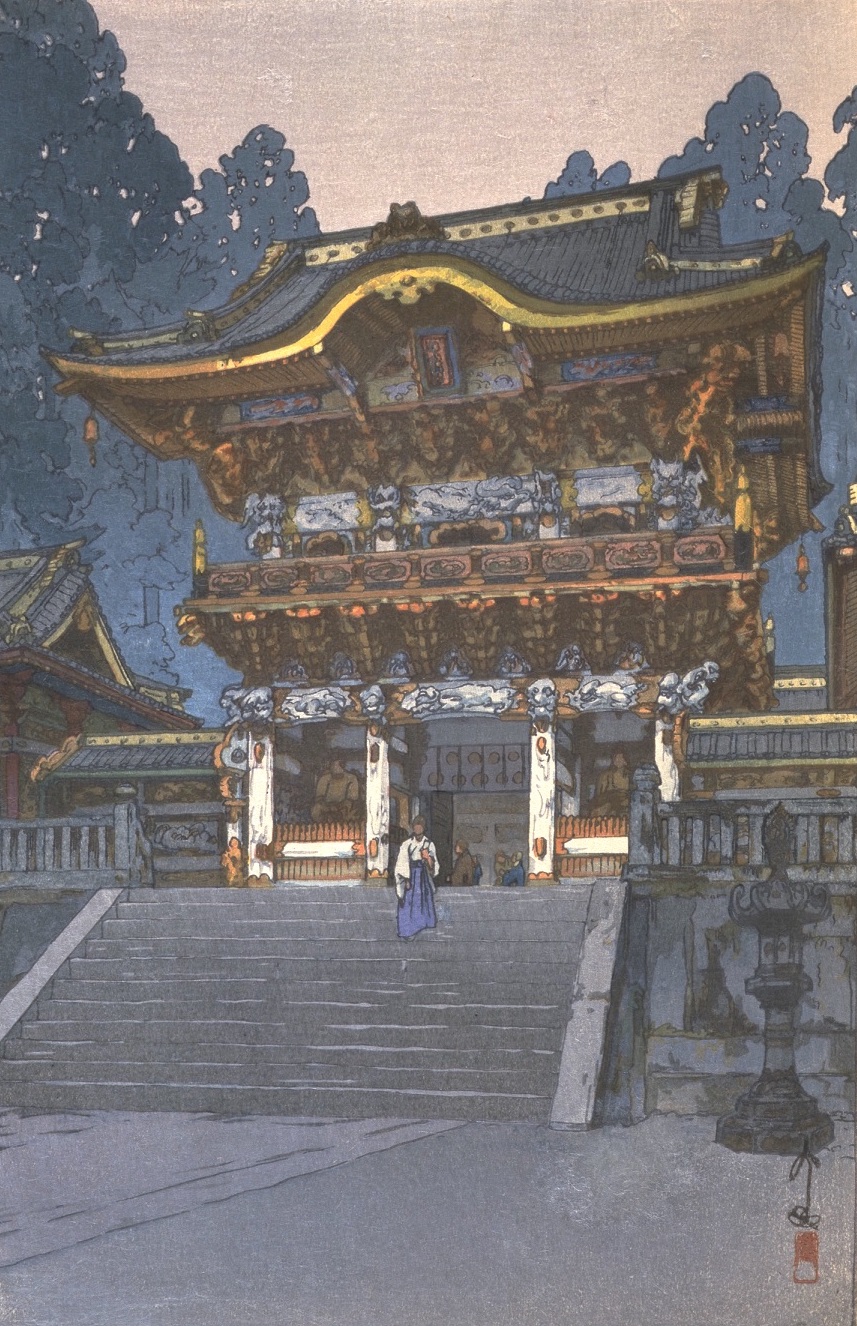
Yōmei Gate (1937)
Yoshida Hiroshi the artist
◆Extensive travels in Europe and the Americas
Yoshida was born in 1876 as the second son of a feudal samurai family of Ueda in the city of Kurume, Fukuoka. He moved to Fukuoka city in 1887 to attend a public school, where an art teacher, Yoshida Kasaburo, recognized his aptitude for art and adopted him into his family in 1891. Subsequently, Hiroshi was sent to Kyoto in 1893, aged 17, to study under Tamura Shoryu (1846–1918), a well-known teacher of western-style painting. The following year, he moved to Tokyo to join an art school Fudosha, led by Koyama Shōtarō (1957–1916). In 1899, aged 23, Yoshida decided to travel to North America with his collection of watercolors, accompanied by his younger colleague, Nakagawa Hachiro. He had his first exhibition at the Detroit Institute of Arts to a great success. Having garnered sufficient funds from the sales, he further traveled to Europe before returning to Japan two years later. In 1903, the artist went back to the USA, this time with his foster sister and future wife, Fujio. They spent the subsequent three years traveling in America as well as in Europe. These travels were golden opportunities for the artist, being able to travel abroad and be exposed to Western art, classic and contemporary alike, while honing his drawing skills. Returning to Japan, he became involved in various major exhibitions as a judge and established himself a significant figure in the development of Japan’s modern Western paintings.
◆Yoshida and woodcut
Yoshida was 44 years old when he met Watanabe Shozaburo, an art publisher, who realized the first publication of the artist’s woodblock print entitled The Sacred Garden in Meiji Shrine. Subsequently, he published Mt. Hodaka and Sailing Boats. In early days, his involvement was limited to providing drawings for the design. However in 1923, the major earthquake that devastated Tokyo prompted him to travel to the USA for the third time as a fund-raising through sales to give support to the fellow artists who fell victim to the disaster. During this stay, his attitude to woodblock printing changed. Realizing how popular Japanese woodblock prints were in America, Yoshida was convinced of the need to develop new style woodcut leveraging the traditional techniques. Upon his return to Japan in 1925, he published his woodblock print collections The United States Series (6 prints) and Europe Series (11 prints), of which he oversaw the entire process himself for the first time. Thereafter, he worked on woodcut with enthusiasm as much as he was active in oil painting. He employed seasoned carvers and printers in the production and oversaw their work closely. The prints thus produced were stamped with a mark of authenticity “jizuri.” Yoshida himself strove to master the skills in carving so as to be able to instruct his craftsmen more effectively. A few prints were thus produced by his own hands.
◆Exotic landscapes
Yoshida produced many woodblock prints depicting landscapes outside Japan, based on the drawings he made during his visits to America and Europe, taking more than seven years in total over three trips. These include El Capitan and Mount Rainier. In 1930, he took his eldest son Tōshi to a sketching trip in India and Southeast Asia. From this trip, he created a series of prints, including The Palace of Udaipur, The Taj Mahal in the Morning Mist No. 5, and Caravan from Afghanistan. In 1937, he published a 5-piece series of Korea and Manchuria, including Daedong Gate and A Market in Mukden. He then spent three years in China as a military painter. Xingzi is one of the works that originated in this period. These prints eloquently convey the world’s scenic beauty seen through the artist’s keen eyes.
◆Mountains
Yoshida was partial to mountains throughout his life. As well as making many works on the subject, he published a book Telling the Beauty of Peaks, in which he described his love of mountains. He would spend all summer in mountains to make drawings, and produce oil paintings and woodblock prints for the rest of the year. He continued this lifestyle for about 20 years in his 30s until 50s. The series Twelve Scenes in the Japan Alps and Ten Views of Fuji are the fruits of this period. His gaze at mountains was also directed to those outside Japan, as seen in Mount Rainier and The Jungfrau. His enthusiasm with the beauty of mountains extended so far as to inaugurate the Japan Society of Mountain Paintings when he was 60.
◆Water
Many of Yoshida’s works depict water in various forms, such as streams, ponds, lakes and the sea. Often the water reflects the scenery above it, rendered realistically with superb precision. This was made possible by the artist’s unique method involving numerous blocks. Notice how the setting sun is shimmering on the sea water in Glittering Sea from The Inland Sea Series—the effect Yoshida himself carved out using a rounded chisel.
